TerlinguaRanch.com is a speedy secure responsive web design (SSRWD) created and maintained by Big Bend web developer WLWeb.US. Here is their 12-point SSRWD validation:
01: HTTP/2 SUPPORT
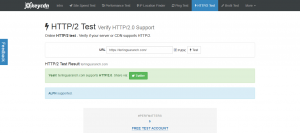 HTTP/2 (RFC 7540) is a major recent revision of the Internet World Wide Web’s HTTP network transport protocol based on the SPDY protocol originally developed by Góógle. HTTP/2 leverages multiplexing, server push, stream priority, header compression and other technological advances to significantly improve page load times and download speeds over encrypted connections. You can verify that this website supports HTTP/2 here:
HTTP/2 (RFC 7540) is a major recent revision of the Internet World Wide Web’s HTTP network transport protocol based on the SPDY protocol originally developed by Góógle. HTTP/2 leverages multiplexing, server push, stream priority, header compression and other technological advances to significantly improve page load times and download speeds over encrypted connections. You can verify that this website supports HTTP/2 here:
https://tools.keycdn.com/http2-test
02: PAGE SPEED OPTIMIZATION
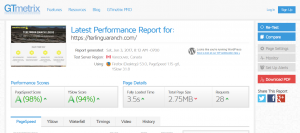 The vast majority of all website traffic is generated from search engine queries. Most of that traffic flows to web pages with high visibility in organic search results – especially Góógle search rankings. Góógle, Bíng and other major search engines gives significant rank preference to web pages with speedy secure responsive web design. You can analyze the page speed optimization applied to this website here:
The vast majority of all website traffic is generated from search engine queries. Most of that traffic flows to web pages with high visibility in organic search results – especially Góógle search rankings. Góógle, Bíng and other major search engines gives significant rank preference to web pages with speedy secure responsive web design. You can analyze the page speed optimization applied to this website here:
03: SSL/TLS/HSTS SECURITY
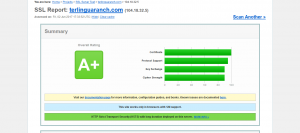 With concerns over Internet privacy at an all-time high, sites that are proactive about security will be the preferred product vendors and service providers. HTTP Strict Transport Security (HSTS) – the most reliable form of SSL/TLS encryption – helps protect website users from malicious hackers, ISP and third-party snooping, and unwarranted government surveillance. Proper HSTS deployment can be validated here:
With concerns over Internet privacy at an all-time high, sites that are proactive about security will be the preferred product vendors and service providers. HTTP Strict Transport Security (HSTS) – the most reliable form of SSL/TLS encryption – helps protect website users from malicious hackers, ISP and third-party snooping, and unwarranted government surveillance. Proper HSTS deployment can be validated here:
https://www.ssllabs.com/ssltest/index.html
04: RESPONSIVE WEB DESIGN
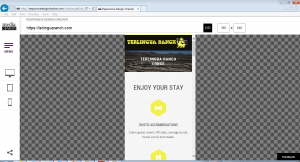 Responsive web design is a web development methodology that allows web pages to be flexibly rendered in response to the screen size of the requesting device (e.g. desktop monitors, notebook PCs, tablet computers or smart phones). Responsive web pages adapt their layout to the viewing environment by using fluid grids, flexible images and CSS3 media queries. You can check website responsiveness here:
Responsive web design is a web development methodology that allows web pages to be flexibly rendered in response to the screen size of the requesting device (e.g. desktop monitors, notebook PCs, tablet computers or smart phones). Responsive web pages adapt their layout to the viewing environment by using fluid grids, flexible images and CSS3 media queries. You can check website responsiveness here:
http://responsivedesignchecker.com/
05: MALWARE SCAN (INTEGRITY)
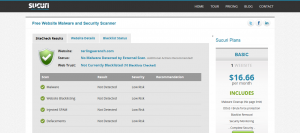 Computer viruses, spyware and other malicious software (malware) is sometimes found embedded by hackers in the programs, web pages and downloads of otherwise trustworthy companies. Malware includes Trojan horses that may appear useful or attractive but have hidden functionality such as tracking to gather marketing statistics for spammers. You can verify the integrity of web resources here:
Computer viruses, spyware and other malicious software (malware) is sometimes found embedded by hackers in the programs, web pages and downloads of otherwise trustworthy companies. Malware includes Trojan horses that may appear useful or attractive but have hidden functionality such as tracking to gather marketing statistics for spammers. You can verify the integrity of web resources here:
06. SEMANTIC METADATA OPTIMIZATION
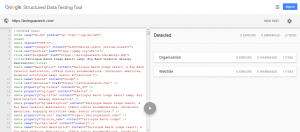 Metadata is “data about other data”. Examples of metadata include META, Schema.org and other structured data tags embedded in the HTML source of web pages. Proper semantic optimization of web page metadata enables search engines to better understand and index the content of web pages, and consequently such web pages enjoy higher visibility in search results. You can evaluate structured data here:
Metadata is “data about other data”. Examples of metadata include META, Schema.org and other structured data tags embedded in the HTML source of web pages. Proper semantic optimization of web page metadata enables search engines to better understand and index the content of web pages, and consequently such web pages enjoy higher visibility in search results. You can evaluate structured data here:
https://search.google.com/structured-data/testing-tool
07. W3C VALIDATION – HTML5
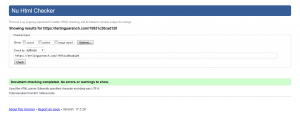 The World Wide Web Consortium (W3C) was established in 1994 to lead the Web to its full potential by providing the web developer with standards to promote its evolution and assure interoperability. Validating compliance with W3C HTML standards insures that all users (and bots, especially search engine spiders) have reliable access to the content and resources of your site. You can validate HTML markup source here:
The World Wide Web Consortium (W3C) was established in 1994 to lead the Web to its full potential by providing the web developer with standards to promote its evolution and assure interoperability. Validating compliance with W3C HTML standards insures that all users (and bots, especially search engine spiders) have reliable access to the content and resources of your site. You can validate HTML markup source here:
08. W3C VALIDATION – CSS3
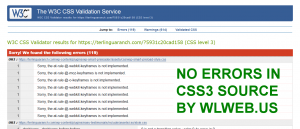 Cascading Style Sheets allow the separation of document content (HTML) from document format (CSS). The CSS language allows you to present the same markup page in different styles for different rendering methods. Validating compliance with W3C CSS standards insures that your content will be presented consistently and as intended across multiple devices and browsers. You can validate CSS3 stylesheet source here:
Cascading Style Sheets allow the separation of document content (HTML) from document format (CSS). The CSS language allows you to present the same markup page in different styles for different rendering methods. Validating compliance with W3C CSS standards insures that your content will be presented consistently and as intended across multiple devices and browsers. You can validate CSS3 stylesheet source here:
http://jigsaw.w3.org/css-validator/
09. W3C VALIDATION – INTERNATIONALIZATION
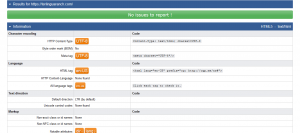 The World Wide Web Consortium (W3C) Internationalization (I18n) Checker provides information about the internationalization features of a web page. It also summarizes key information about character encoding, language declarations, class/id names and request headers. Getting internationalization right saves time and trouble if you ever need to use your content in a language-sensitive way. You can access the I18n checker here:
The World Wide Web Consortium (W3C) Internationalization (I18n) Checker provides information about the internationalization features of a web page. It also summarizes key information about character encoding, language declarations, class/id names and request headers. Getting internationalization right saves time and trouble if you ever need to use your content in a language-sensitive way. You can access the I18n checker here:
https://validator.w3.org/i18n-checker/
10. W3C VALIDATION – LINKS
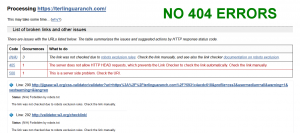 Broken links present your site visitors, prospects and customers with roadblocks, detours and dead-ends that may cause them to question your competence and credibility. It may not seem like much on the surface, but a broken link can do serious damage to your reputation and your business. A single broken link can impact search rankings and user experience and/or result in lost clients and revenue. The W3C provides a link checker here:
Broken links present your site visitors, prospects and customers with roadblocks, detours and dead-ends that may cause them to question your competence and credibility. It may not seem like much on the surface, but a broken link can do serious damage to your reputation and your business. A single broken link can impact search rankings and user experience and/or result in lost clients and revenue. The W3C provides a link checker here:
https://validator.w3.org/checklink
11. W3C VALIDATION – RSS
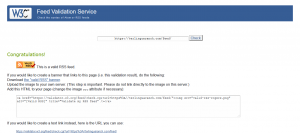 RSS (Rich Site Summary; originally RDF Site Summary; often called Really Simple Syndication) uses a family of standard web feed formats to publish frequently updated information: blog entries, news headlines, audio, video. The World Wide Web Consortium (W3C) RSS validator is an attempt to codify the specification, make it easier to know when you are producing RSS correctly, and to help you fix it if you are not:
RSS (Rich Site Summary; originally RDF Site Summary; often called Really Simple Syndication) uses a family of standard web feed formats to publish frequently updated information: blog entries, news headlines, audio, video. The World Wide Web Consortium (W3C) RSS validator is an attempt to codify the specification, make it easier to know when you are producing RSS correctly, and to help you fix it if you are not:
https://validator.w3.org/feed/
12. DOMAIN NAME SERVER (DNS)
 This Pingdom DNS checking tool tests delegation, nameserver, consistency, start of authority (SOA), connectivity and domain name system security extensions (DNSSEC) to verify that the DNS servers and settings for your website are configured properly. This assures that domain names resolve to the right IP address, that web page requests are routed and responded to correctly, and that emails are sent and received as intended:
This Pingdom DNS checking tool tests delegation, nameserver, consistency, start of authority (SOA), connectivity and domain name system security extensions (DNSSEC) to verify that the DNS servers and settings for your website are configured properly. This assures that domain names resolve to the right IP address, that web page requests are routed and responded to correctly, and that emails are sent and received as intended:

